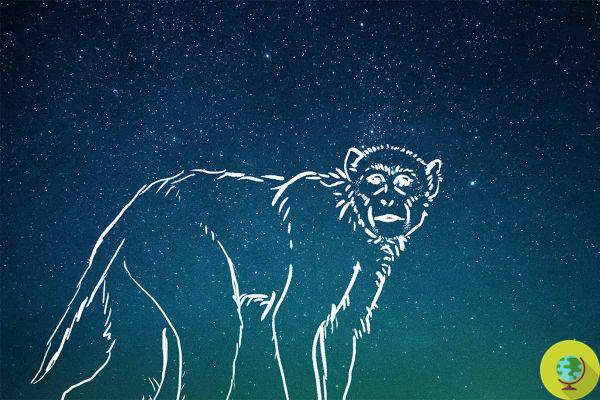
In just one day, in February 2019, NASA killed 27 elderly and sick monkeys. Why weren't they entrusted to a sanctuary instead?
He is about to end up run over, his mother saves himAll 27 monkeys detained in a NASA research center were killed in a single day in 2019. The Guardian newspaper revealed this in recent days. The news infuriated animal activists as the monkeys, old and sick, could instead be entrusted to a sanctuary.
A very questionable choice that of NASA which, struggling with the 27 monkeys present in the Ames research center in Silicon Valley (California), now elderly and sick, decided to kill them all on February 2, 2019. The news, however, was only made known now from The Guardian which has obtained official documents that testify to the massacre, which took place almost a year ago.
The monkeys they were getting older and 21 of them had Parkinson's. It was then decided to euthanize animals by administering drugs to them. The alternative, however, existed, they could in fact be transferred to some sanctuary that would surely have welcomed them, in order to save their life.
Primates "suffered from the ethological deprivations and frustrations inherent in laboratory life," commented John Gluck, an animal ethics expert at the University of New Mexico while Kathleen Rice, a United States House Representative, wrote to Jim Bridenstine , NASA administrator, to ask for explanations on what happened.
"I look forward to an explanation from Administrator Bridenstine as to why these animals were forced to perish in captivity and be euthanized rather than live their lives in a sanctuary," he told The Guardian.
The monkeys euthanized last year, the British newspaper said, were not used in daring space missions or directly for NASA research. These were primates housed at the Ames facility as part of a joint care agreement between NASA and LifeSource BioMedical, a separate drug research entity.
No experiments have been conducted on these monkeys in the California laboratories. As Stephanie Solis, chief executive of LifeSource BioMedical said, the primates arrived years ago after it was not possible to find shelter for them due to age and poor health.
"We decided to accept the animals, acting as a shelter and providing all the care at our expense, until their advanced age and the deterioration of health led to the decision to euthanasia, humanly to avoid a poor quality of life".
American animal welfare organizations are furious and consider such a choice unjustifiable.
“NASA has many strengths, but when it comes to animal welfare practices, they are outdated. What a tragic end to these monkeys, ”commented Mike Ryan, spokesperson for Rise for Animals.
This group was the one who managed to obtain, in the name of freedom of information, the delivery of the documents relating to the killing of primates in the Californian center of NASA.
Undoubtedly, a different choice could have been made, guaranteeing these monkeys, already very tried, a welcoming home as an animal sanctuary can be, where they would have spent the last years or months of their lives in serenity.
Source: The Guardian
Read also:
- The terrible truth of monkey experiments: holes in the skull and cemented devices in the head
- Baby Monkey Experiments: What Labs Don't Want You To See (VIDEO)
- 9 macaques released after 11 years of experiments: now LAV asks for freedom for the 6 macaques of the University of Turin
- Laboratory monkeys infected with a lethal coronavirus to find antiviral also effective against Covid-19


























